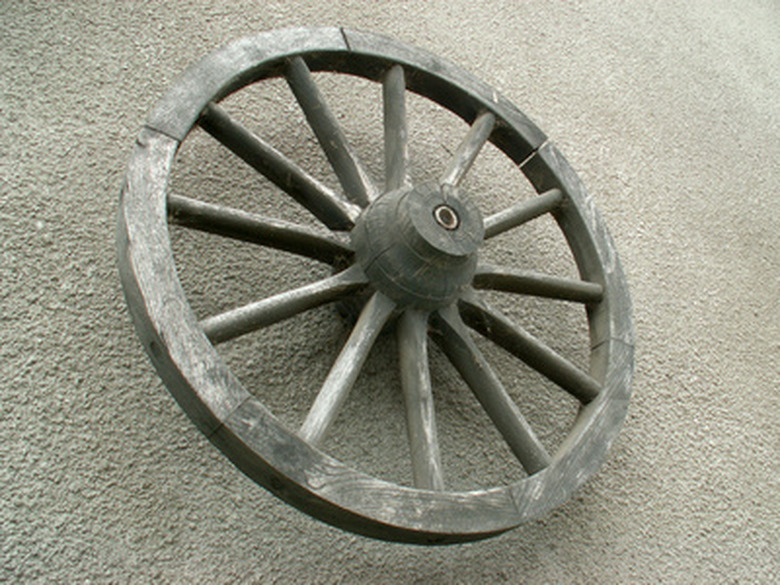How To Find The Degrees In A Circle
Most geometry students learn there are 360 degrees in a circle, 180 degrees in a semicircle and 90 degrees in a quarter of a circle. If you need to draw a certain angle in a circle, but can't "eyeball" the degrees, a protractor can help. If you are confused by the use of radians rather than degrees in a math problem, you can use a simple equation to convert radians to degrees.
Using a Protractor
Step 1
Place the bottom of your protractor — the flat side — on the center of the circle so the center of the protractor lines up with the circle's center with the arched side facing up. The center of the protractor is often marked with a small hole or dot.
Step 2
Look at the numbers on your protractor. If using a semicircle protractor, the most common kind, the numbers will go from 0 to 180. If using a full-circle protractor, the numbers will go from 0 to 360. These numbers represent degrees in a circle.
Step 3
Draw angles on your circle, using your protractor as a guide. The rightmost side of your circle represents 0 or 360 degrees. The top of your circle is located at 90 degrees, the leftmost side of your circle is located at 180 degrees and the bottom of the circle is located at 270 degrees. Use your protractor to figure out any degree points between these.
Converting from Radians
Step 1
Learn to recognize radians. Most people measure angles on a circle in degrees, but engineers, scientists and mathematicians use radians, represented by the Greek symbol for theta. A few degree-to-radian conversions are easy to memorize: 0 degrees = 0 radians, 90 degrees = pi/2 radians, 180 degrees = pi radians, 270 degrees = 3pi/2 radians and 360 degrees = 2pi radians.
Step 2
Memorize the formula for converting radians to degrees: radians = degrees * pi/180. Use 3.14159 to represent pi.
Step 3
Plug radians into the formula to find the degrees. For example, if you have pi radians, plug pi into your formula: pi = degrees * pi/180, so degrees = 180.
Cite This Article
MLA
Sloane, Christina. "How To Find The Degrees In A Circle" sciencing.com, https://www.sciencing.com/degrees-circle-7839371/. 24 April 2017.
APA
Sloane, Christina. (2017, April 24). How To Find The Degrees In A Circle. sciencing.com. Retrieved from https://www.sciencing.com/degrees-circle-7839371/
Chicago
Sloane, Christina. How To Find The Degrees In A Circle last modified August 30, 2022. https://www.sciencing.com/degrees-circle-7839371/
